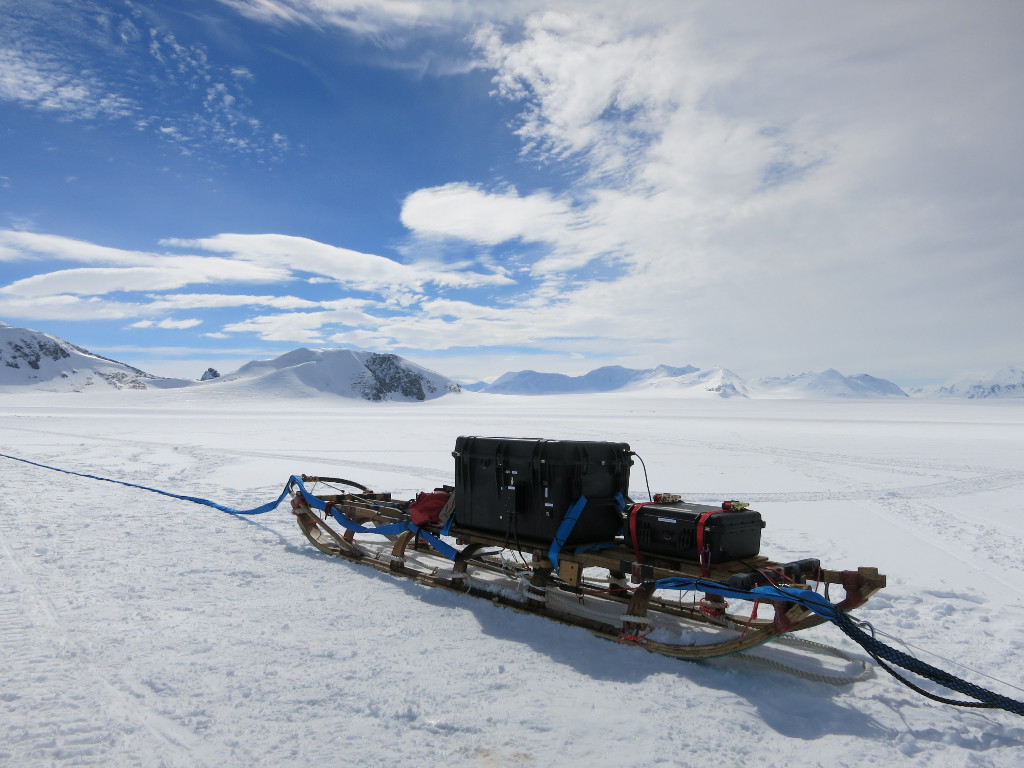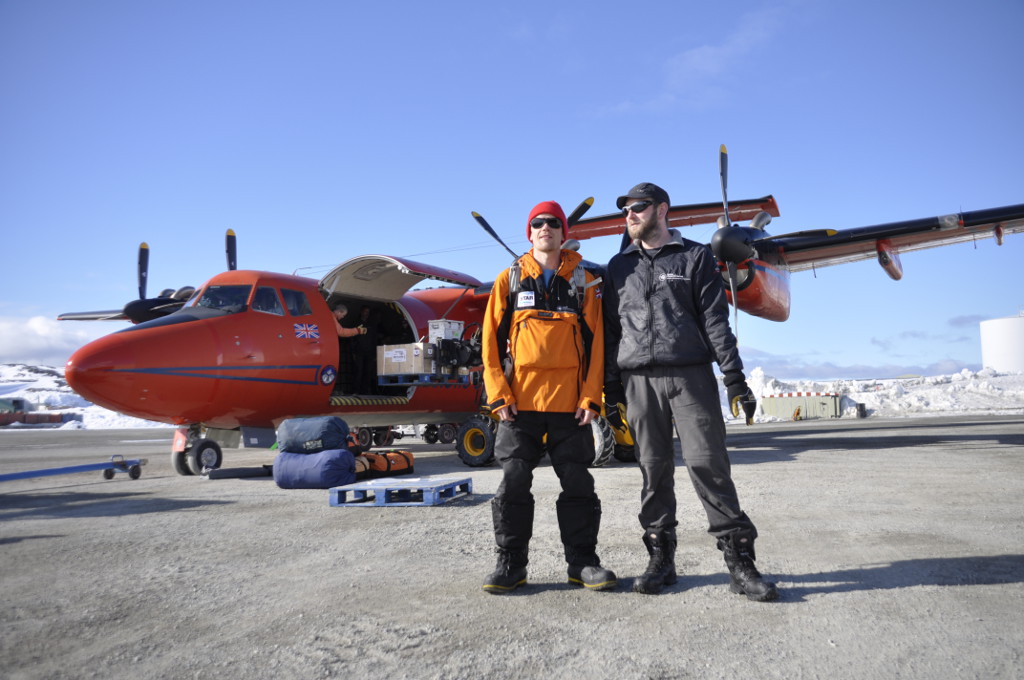As the iStarC team prepares to head out to the field, Dr. Steph Cornford of the University of Bristol’s School of Geographical Sciences has sent this update from Rothera.
Mon Dec 2nd
The iSTAR-C team (David Vaughan, Rob Bingham, Jan de Rydt, Damon Davies and myself) have completed preparations at Rothera and are ready to join the traverse. Poor weather over Rothera delayed our flight from Punta Arenas by one day, so that we arrived on Sunday 24th November ready for a week of hurrying to catch up with the tractor train as it drove along Pine Island Glacier. First we had to complete the safety training that all BAS staff and visitors must pass before heading out into the field, including a skidoo journey up the ramp and along the base of Reptile Ridge to camp for one night in the lightweight tents we will use on the traverse. The campsite seemed remote at first, but shortly after we had pitched our tents and built snow walls around them under the direction of Phil Stevens a Twin Otter landed on the nearby ski-way, and a group of skiers arrived. As a bonus, we got our first taste of crowding into a caboose, albeit a stationary one.
Our next task was to learn to operate DELORES, Ed King’s skidoo-towed ice penetrating radar. Radar transmitter and receivers sit on two separate sledges and each sprout a pair of twenty metre long antennas, which lie on the surface of the snow inside sleeves that also contain fibre optic cables and a slender but strong tow rope. Starting from the skidoo, through the receiver and transmitter, and finishing at the end of the antenna that trails the transmitter, the whole assembly is towed in a line well over one hundred and fifty metres long. Putting it all together from the flat-pack prepared for us by Ed took us around one hour on our first attempt, which I think compares favourably to a wardrobe from a well-known Swedish supplier, although we did have the added benefit of the designer’s watchful eye. After a certain amount of confusion with the GPS we were ready to practice turning in such a way that the antennas lay along the straight lines we will need to hold for fifteen kilometres. It would be a struggle to back into a supermarket parking space even on a quiet day.
Jan and Rob flew out to Sky-Blu on the Dash-7 this morning, Monday 2nd December, taking with them the equipment Jan will use to assemble eleven GPS masts around the margins and in the tributaries of the glacier. David, Damon, and I hope to fly out tomorrow via Fossil Bluff with the remaining equipment and join them, or perhaps chase them on their way to meet the tractor train somewhere before it reaches site six.
I have no doubt we will miss the comfort and the sun shining on a glass sea at Rothera, having read Anna’s description of travelling in the caboose, and having heard James describe the weather on the traverse over the HF radio (wind 30 knots, visibility 100 metres, horizon nil, contrast nil). On the other hand,
I have looked at pictures and models of Pine Island Glacier for nearly four years now and the thought of meeting it face-to-face is what brought me here in the first place.


